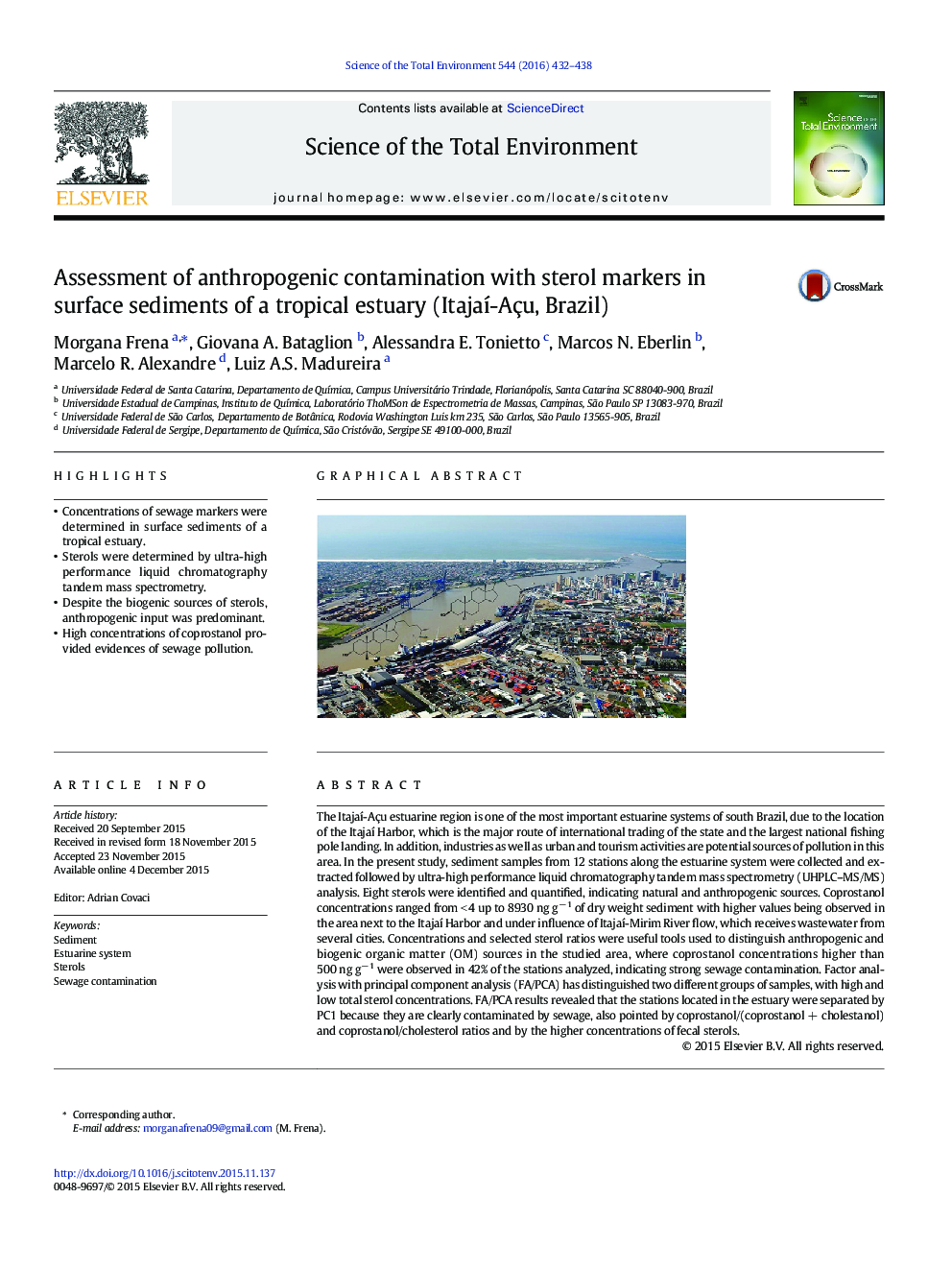| کد مقاله | کد نشریه | سال انتشار | مقاله انگلیسی | نسخه تمام متن |
|---|---|---|---|---|
| 6323639 | 1619738 | 2016 | 7 صفحه PDF | دانلود رایگان |

- Concentrations of sewage markers were determined in surface sediments of a tropical estuary.
- Sterols were determined by ultra-high performance liquid chromatography tandem mass spectrometry.
- Despite the biogenic sources of sterols, anthropogenic input was predominant.
- High concentrations of coprostanol provided evidences of sewage pollution.
The ItajaÃ-Açu estuarine region is one of the most important estuarine systems of south Brazil, due to the location of the Itajaà Harbor, which is the major route of international trading of the state and the largest national fishing pole landing. In addition, industries as well as urban and tourism activities are potential sources of pollution in this area. In the present study, sediment samples from 12 stations along the estuarine system were collected and extracted followed by ultra-high performance liquid chromatography tandem mass spectrometry (UHPLC-MS/MS) analysis. Eight sterols were identified and quantified, indicating natural and anthropogenic sources. Coprostanol concentrations ranged from < 4 up to 8930 ng gâ 1 of dry weight sediment with higher values being observed in the area next to the Itajaà Harbor and under influence of ItajaÃ-Mirim River flow, which receives wastewater from several cities. Concentrations and selected sterol ratios were useful tools used to distinguish anthropogenic and biogenic organic matter (OM) sources in the studied area, where coprostanol concentrations higher than 500 ng gâ 1 were observed in 42% of the stations analyzed, indicating strong sewage contamination. Factor analysis with principal component analysis (FA/PCA) has distinguished two different groups of samples, with high and low total sterol concentrations. FA/PCA results revealed that the stations located in the estuary were separated by PC1 because they are clearly contaminated by sewage, also pointed by coprostanol/(coprostanol + cholestanol) and coprostanol/cholesterol ratios and by the higher concentrations of fecal sterols.
Journal: Science of The Total Environment - Volume 544, 15 February 2016, Pages 432-438